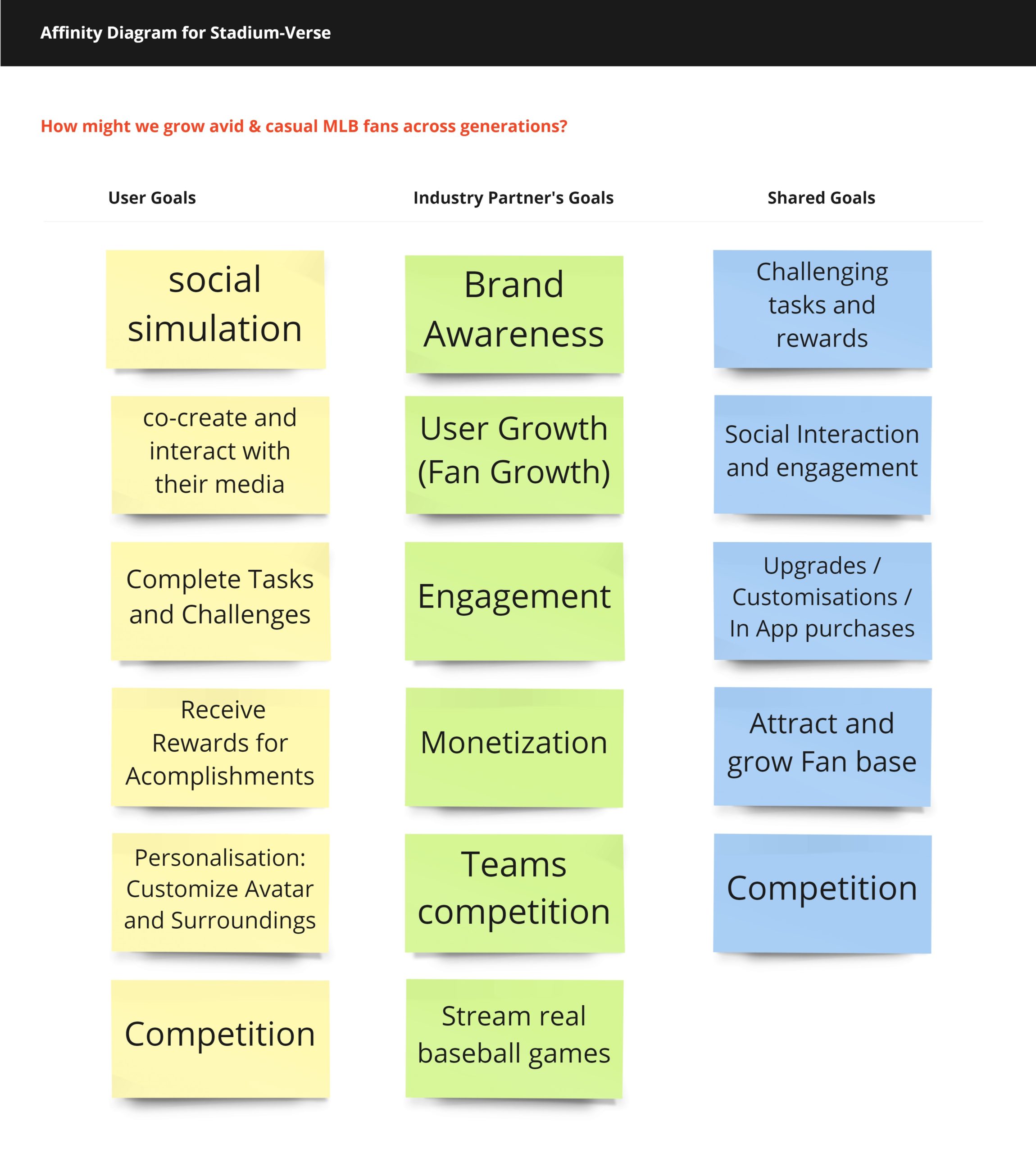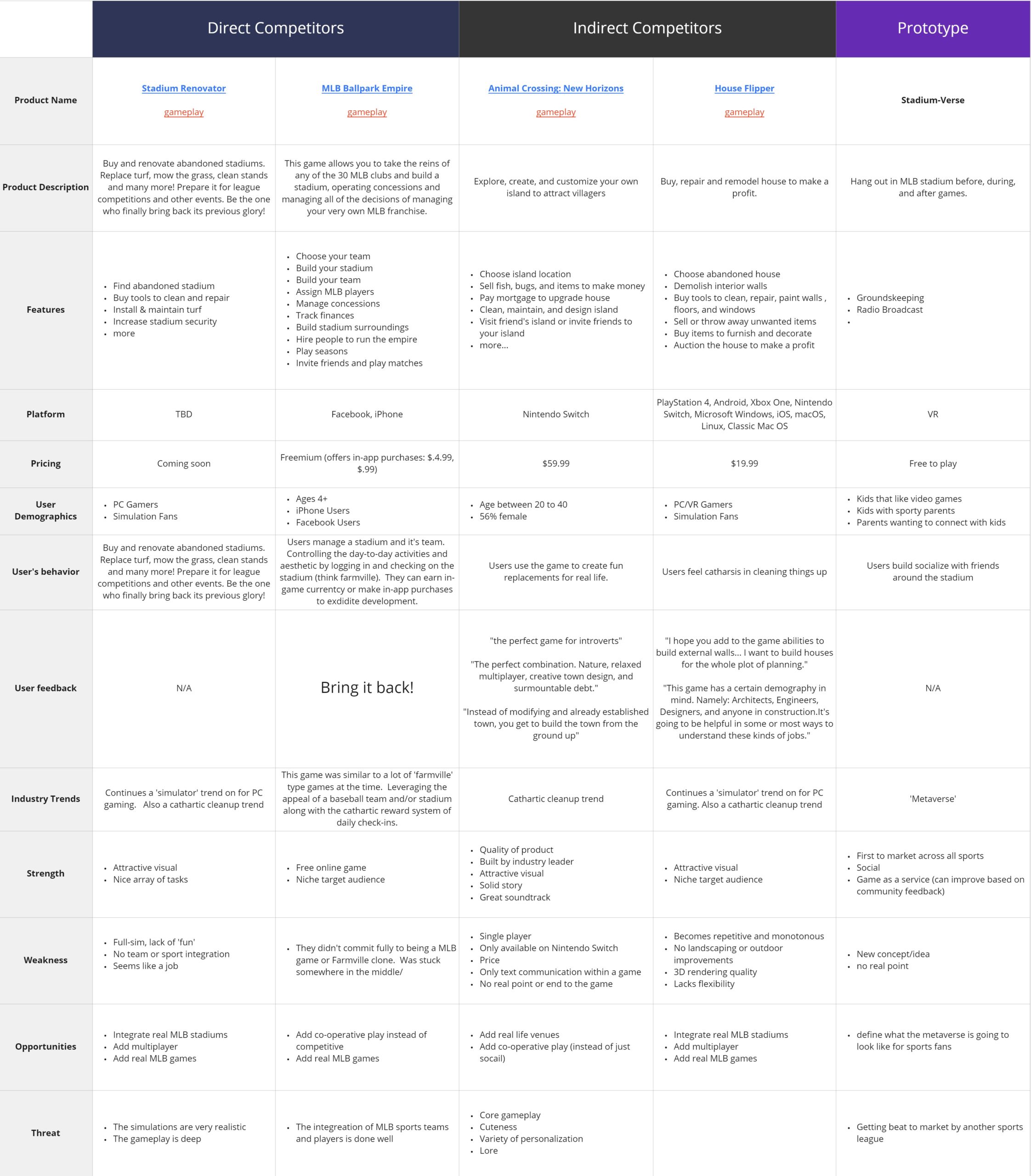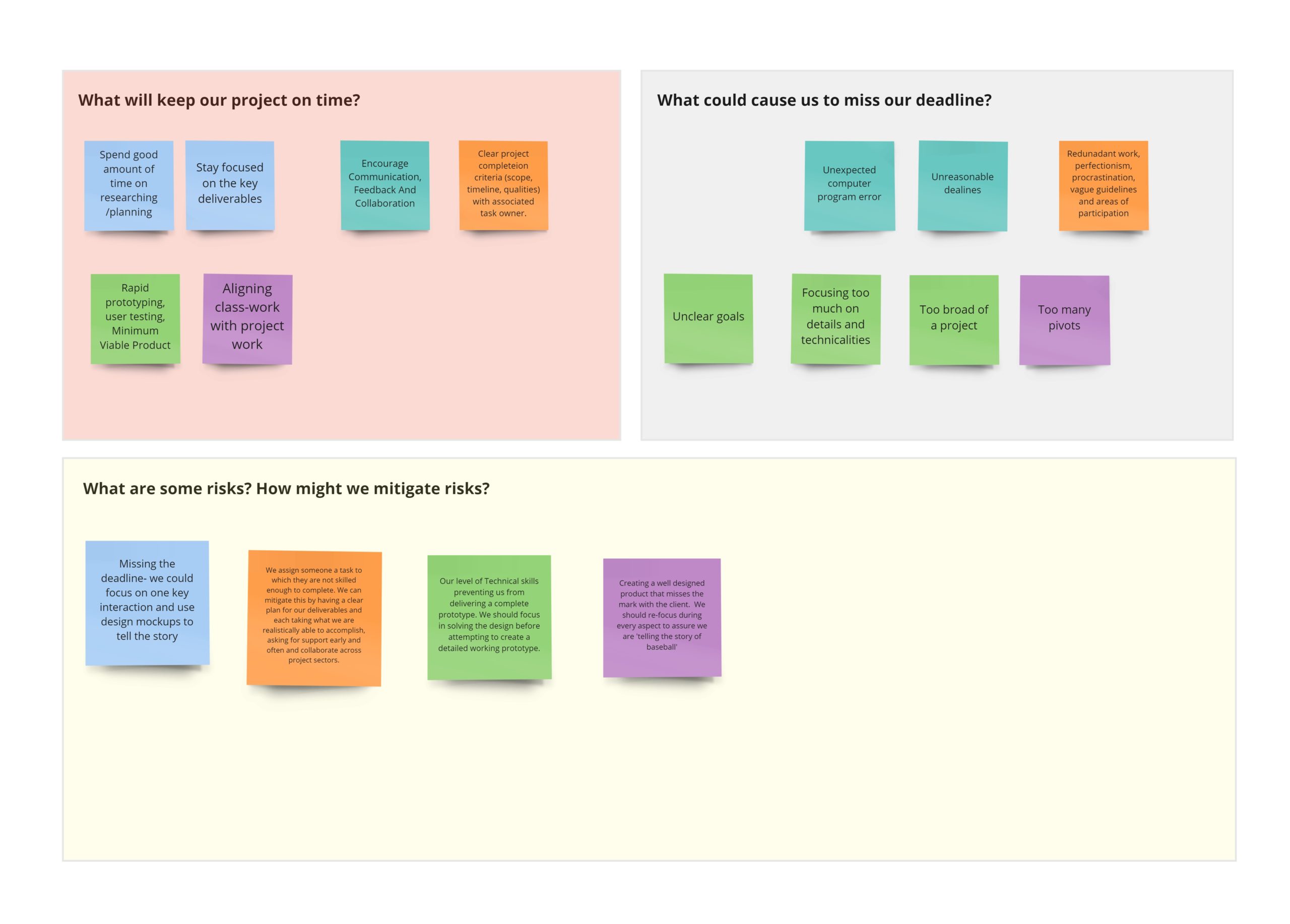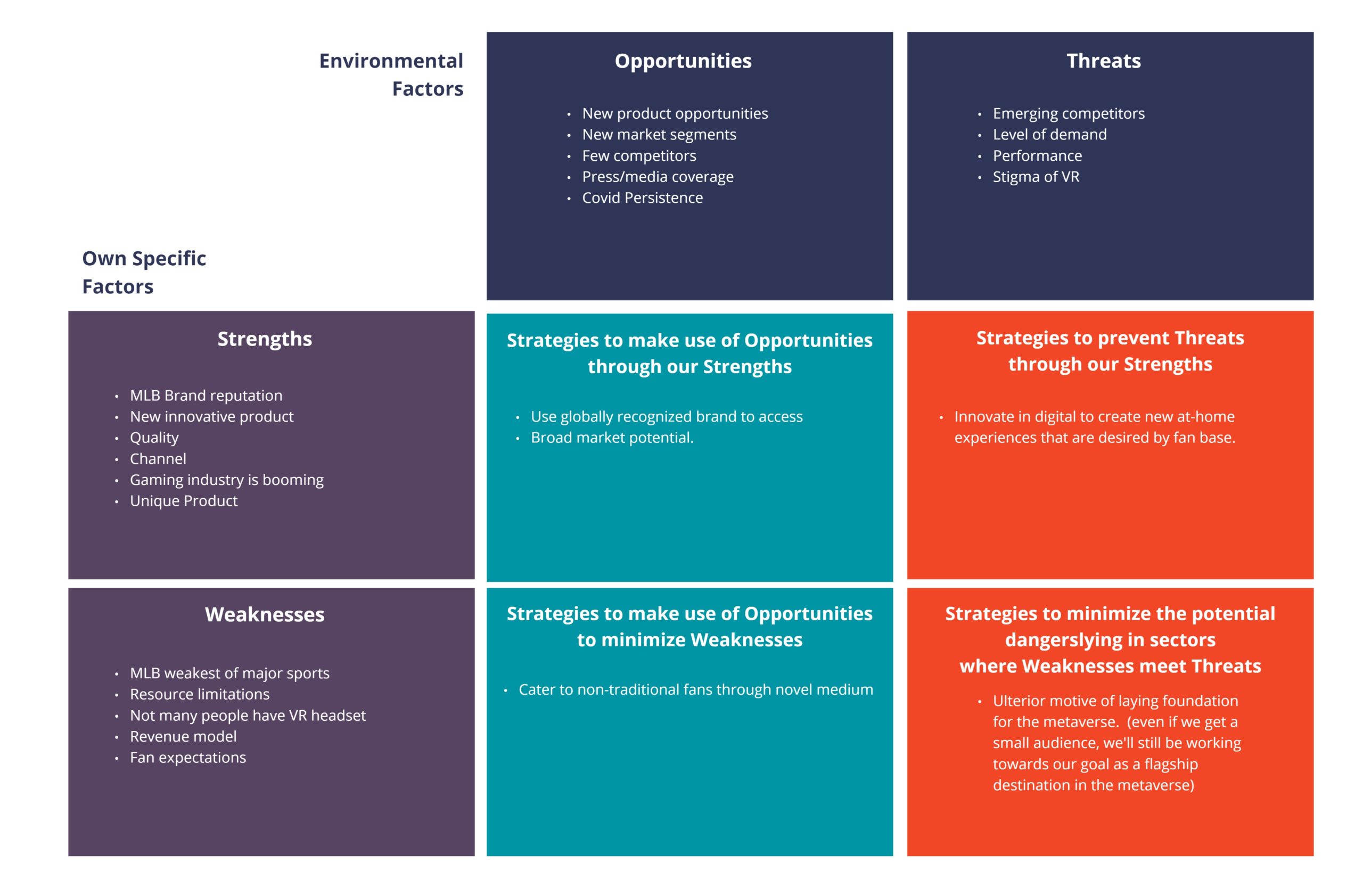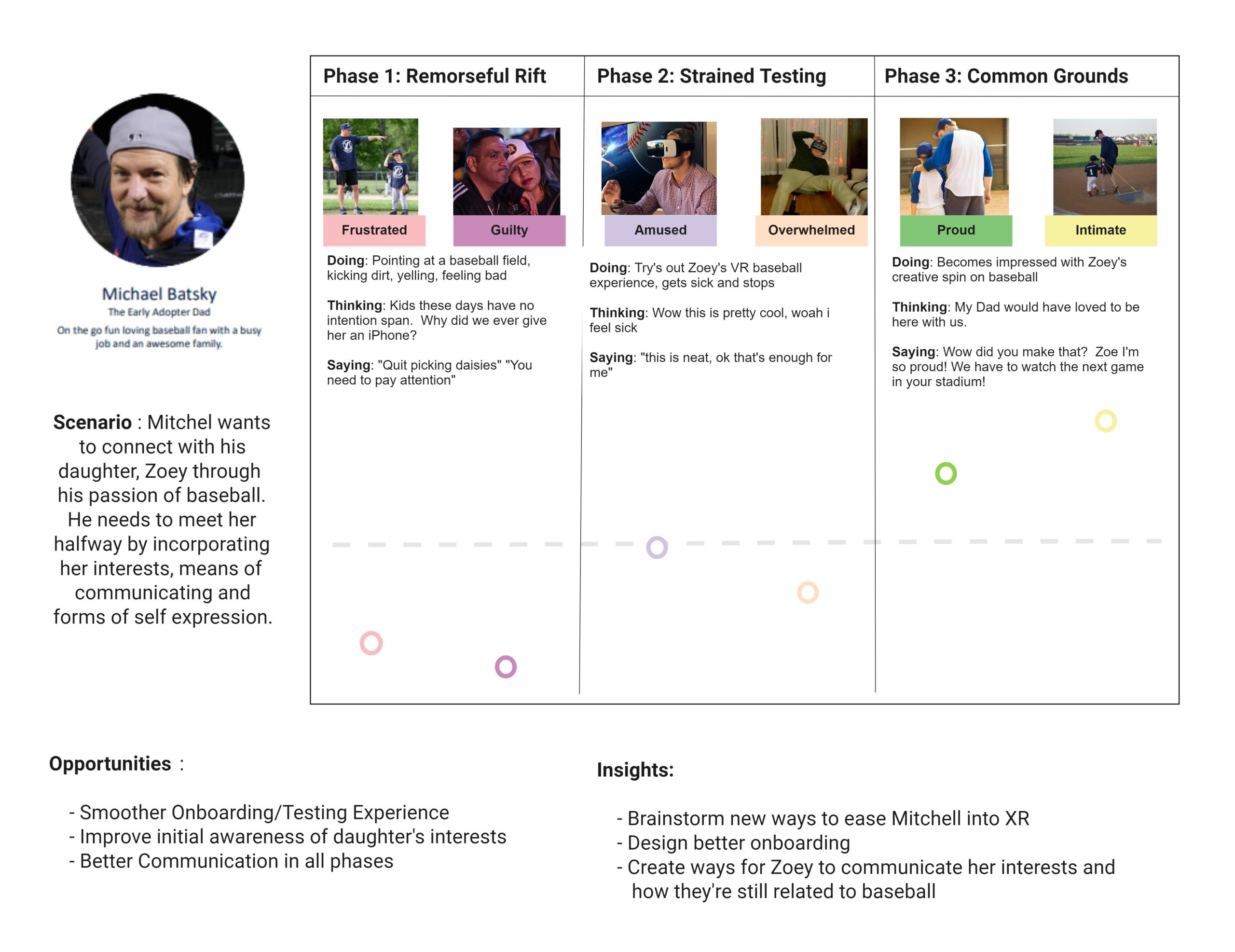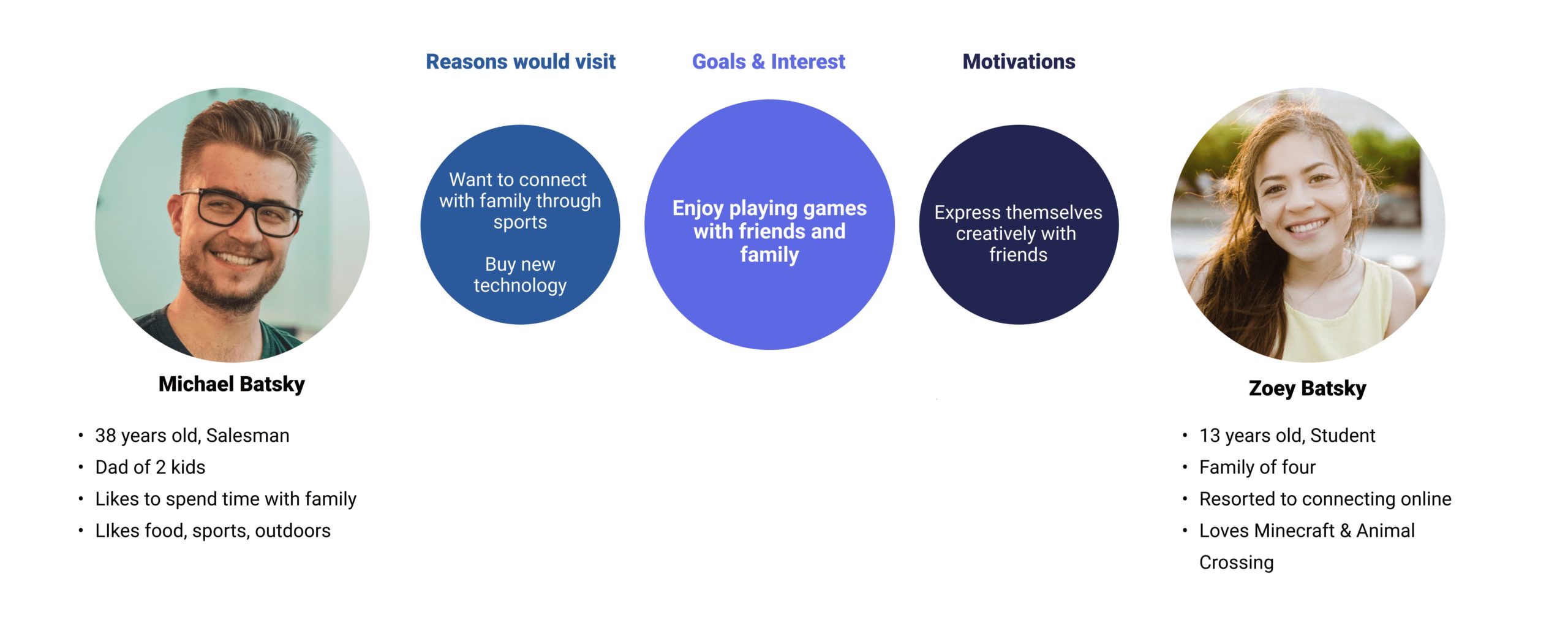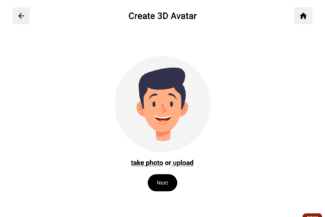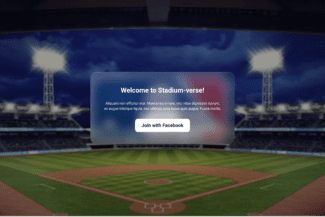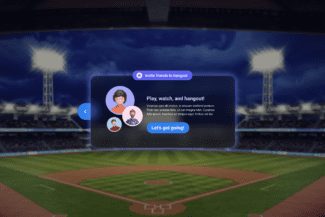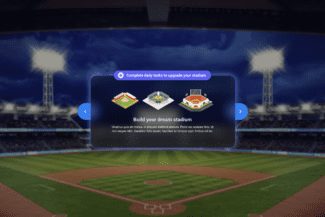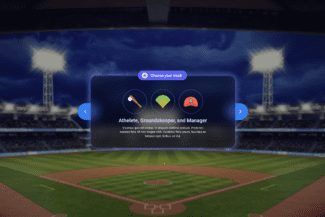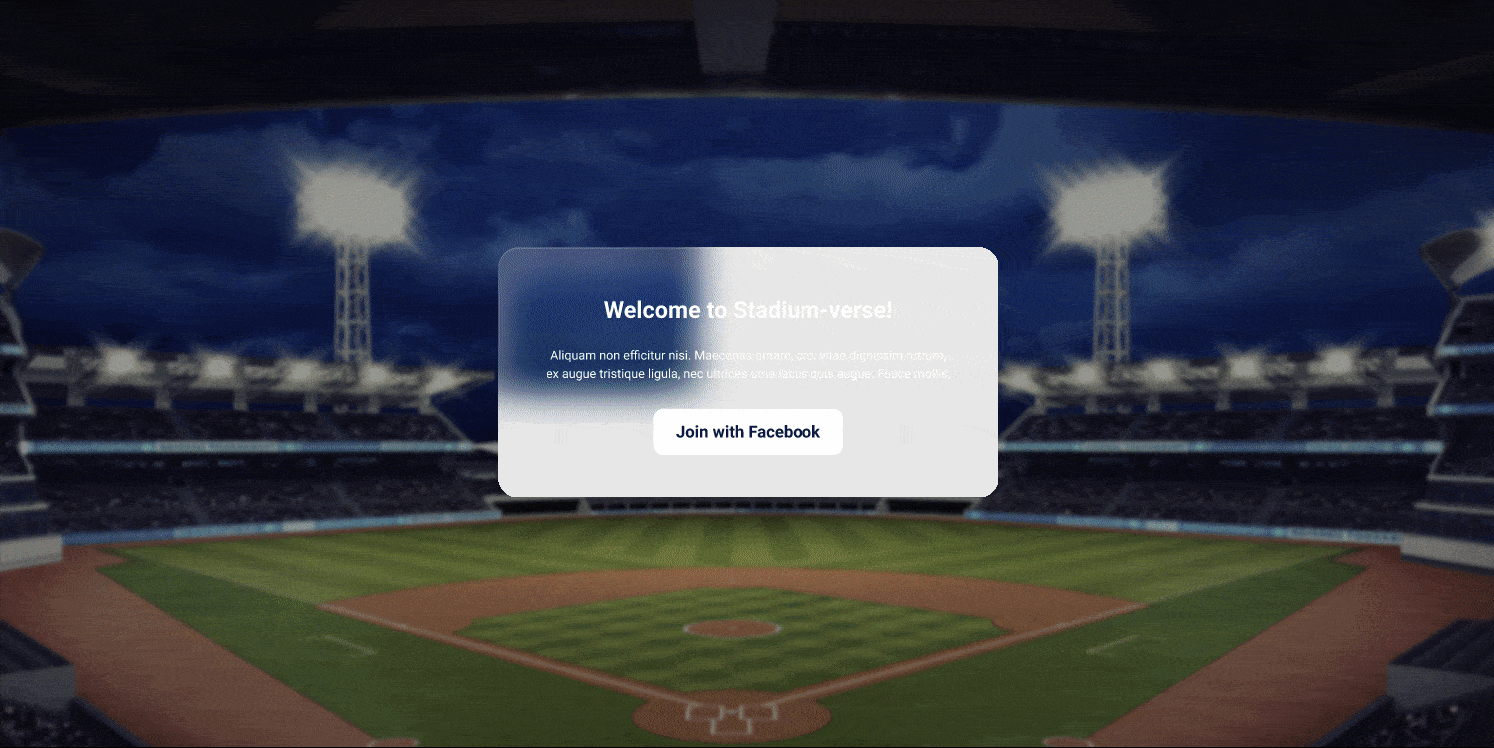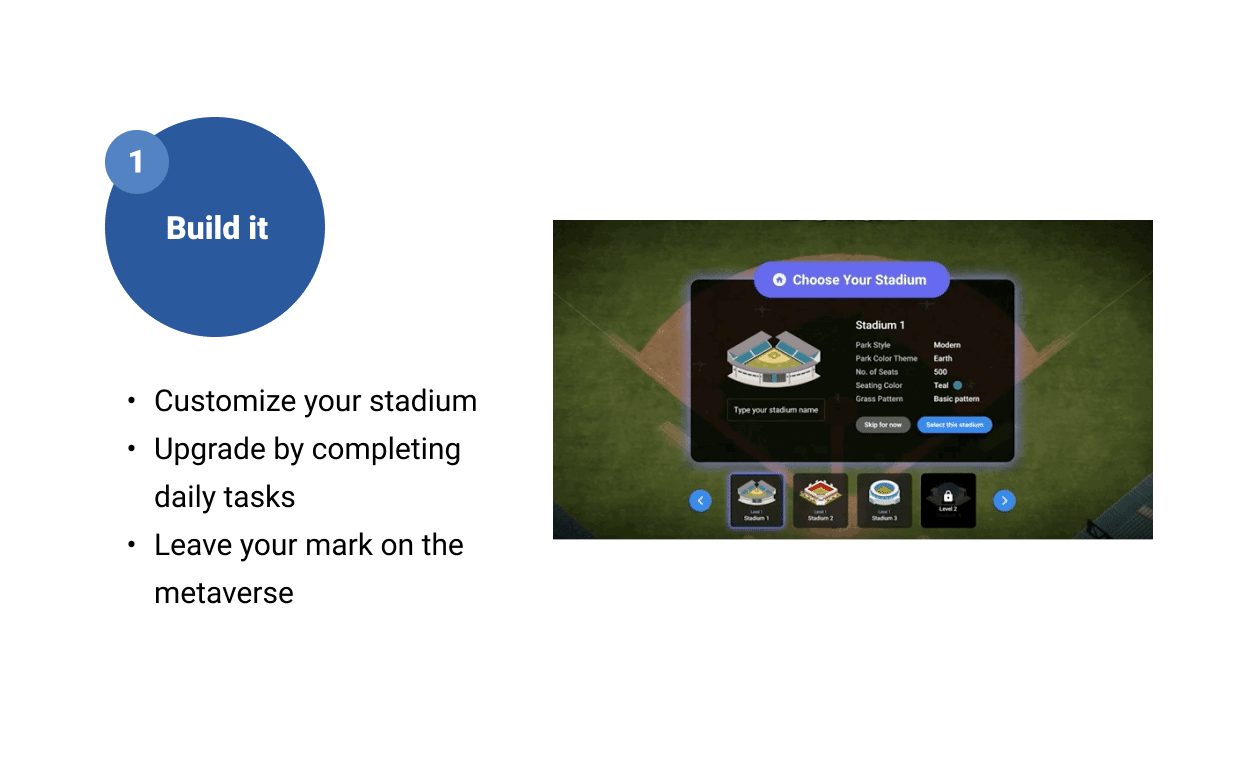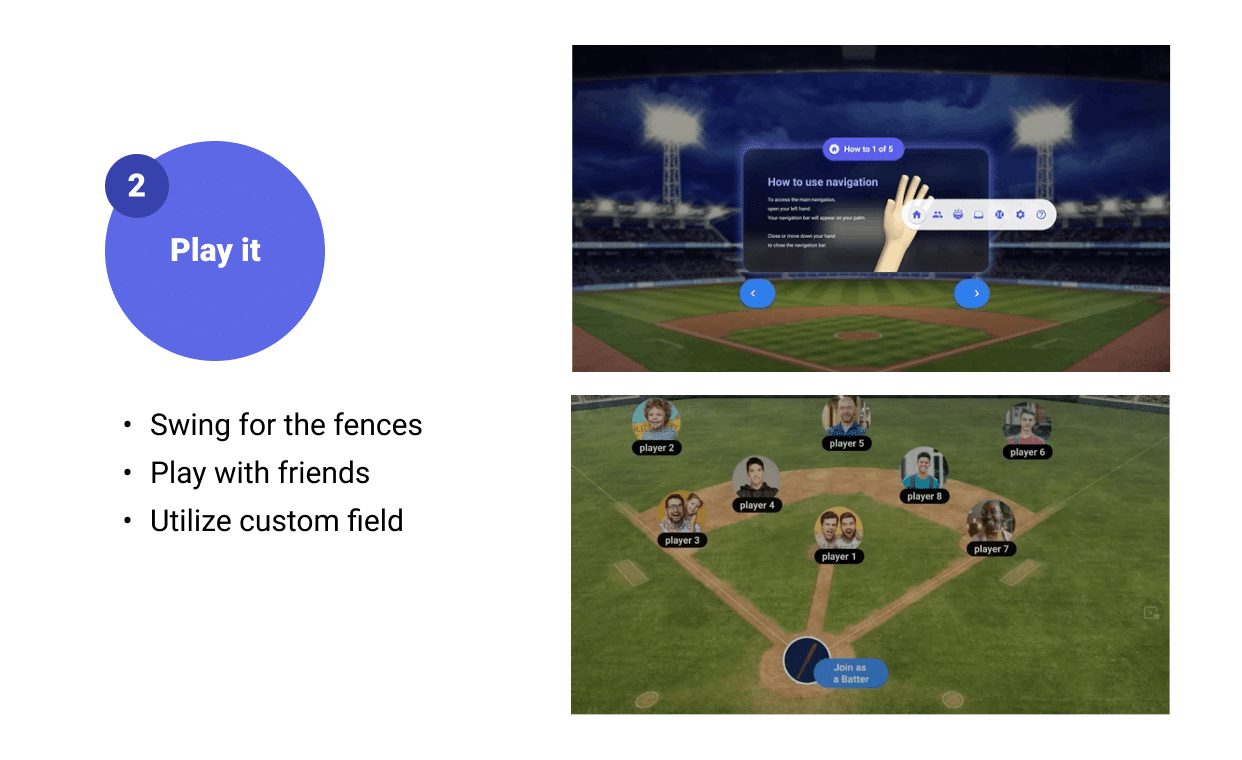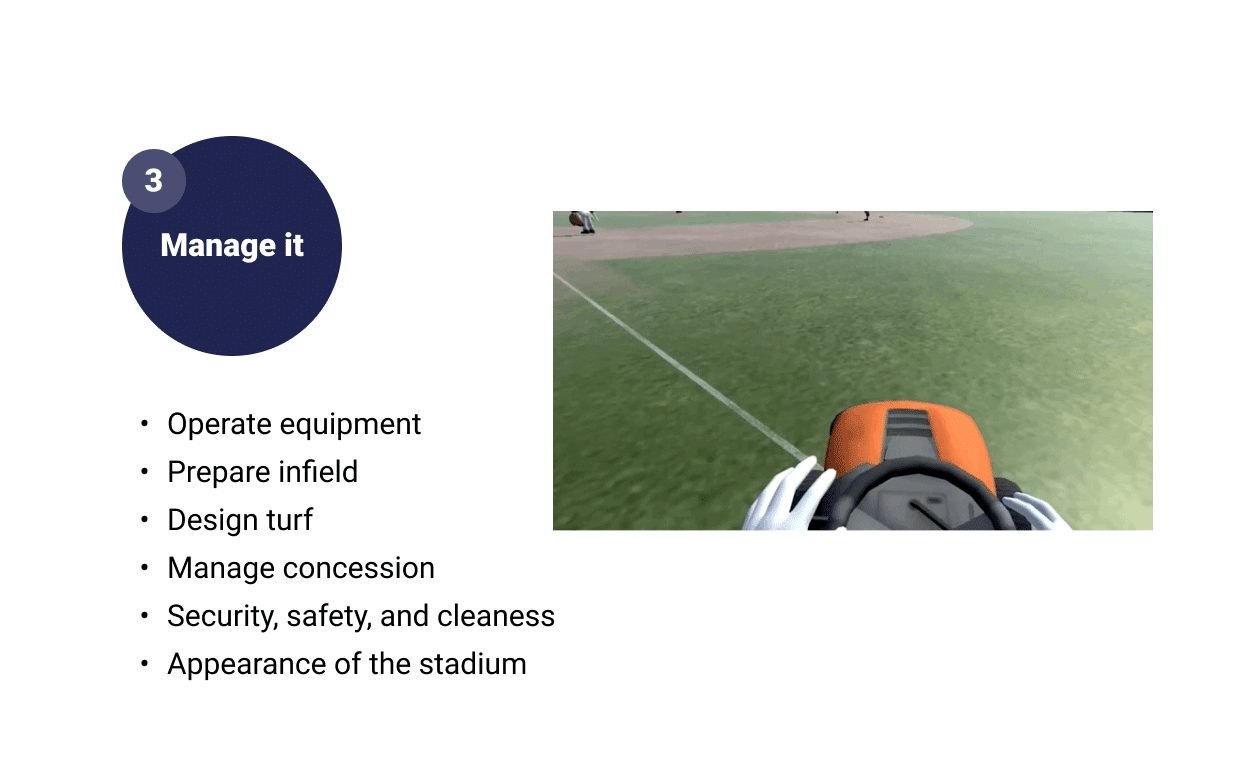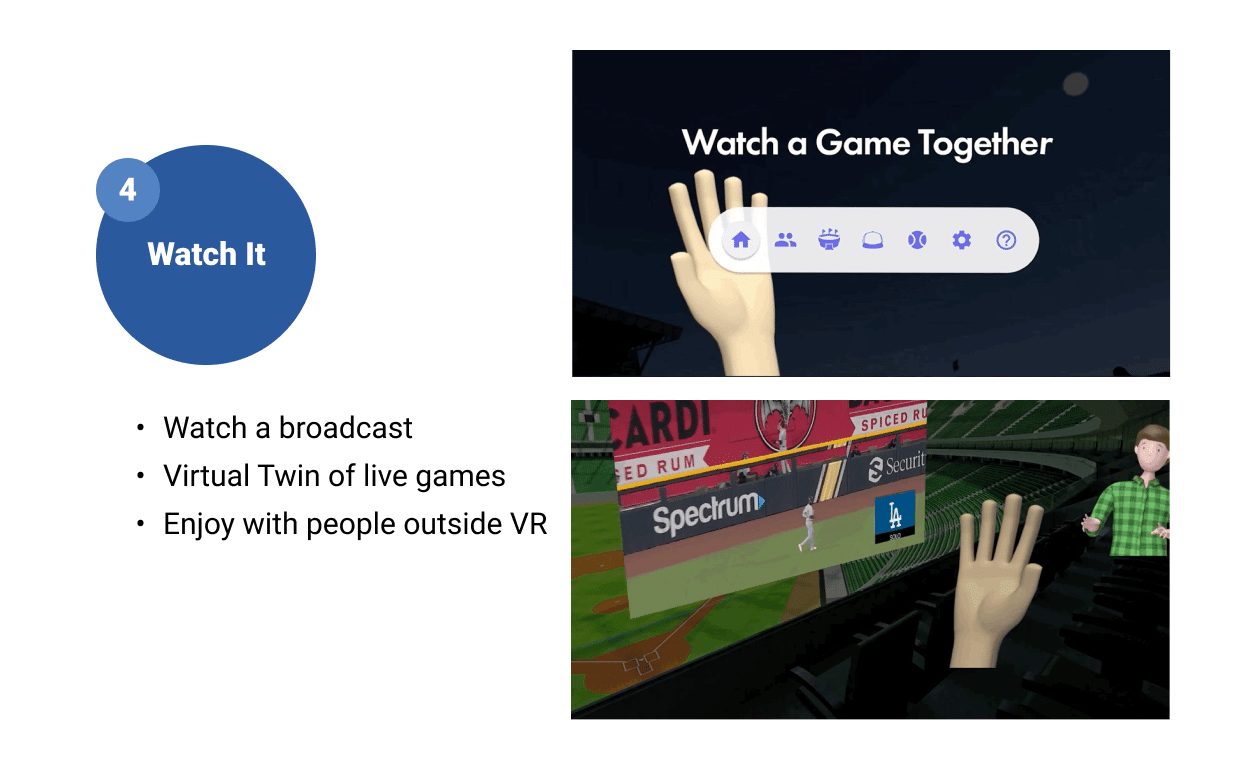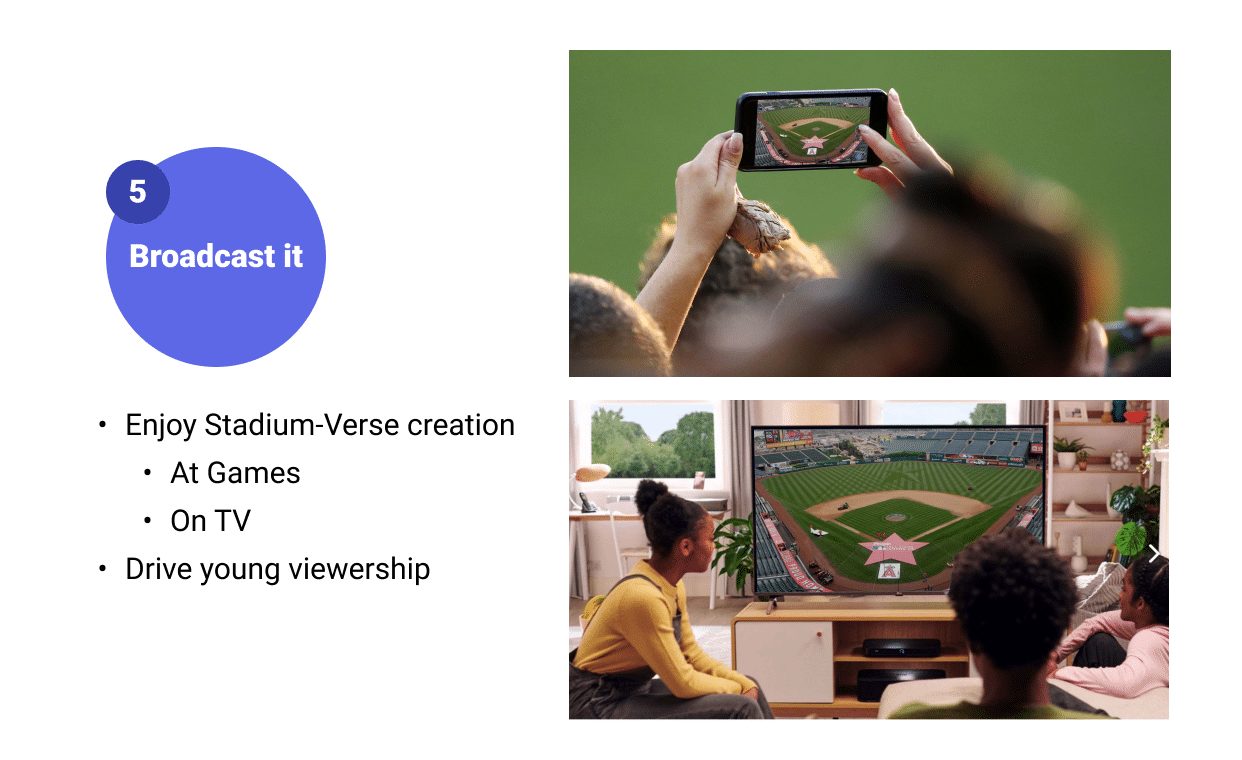Overview
Stadium-verse is a multiplayer VR game that my team and I created for the MLB as a part of our capstone project. I worked on it alongside Rolando Perez, Robyn Lawrence, and SeungKyung Na. It was an honor to work with the Major League Baseball creative team, especially with an immerging technology. They’ve been at the forefront of some of the biggest shifts in how we stream and consume media with Bam Media and have been a long staple in the gaming industry.11
The Challenge
The MLB described to us a growth and retention issue with younger fans that is offset with a core fan base of middle-aged men. They were considering a virtual reality game to potentially solve this. The biggest challenge my team saw was accomplishing human-based game design for such a wide age range for a less popular sport in baseball.
How might we grow avid & casual MLB fans across generations?
Designing a solution and game for this challenge was research driven across current brand interaction, user needs, the gaming industry, MLB, competitors, and fan expectations. With that feedback we’d define our problem, personas flow, and begin journey mapping. But first, we had to discover the driving force behind baseball fandom. Where was the disconnect?

Discovery
Before conducting research we built a number of checks and balances to ensure communication with the client, quality work, timeliness and focus across the team.
- User interviews
- Qualitative Research
- Attitudinal Research
- Requirements & constraints
- Competitive analysis
- Personas
- User Journey map
- Heuristic analysis
- Prototype feedback & testing
Opportunity & Story Telling
Our team was honestly quite unenthusiastic about the sport of baseball… I was the only one who played the sport, and while finding myself bored (often) I loved being able to bond with my Dad over something he enjoyed in his childhood. Our research and interviews showed that little league baseball was by far and away the best marketing tool the MLB had. Specifically these parent/child relationships.
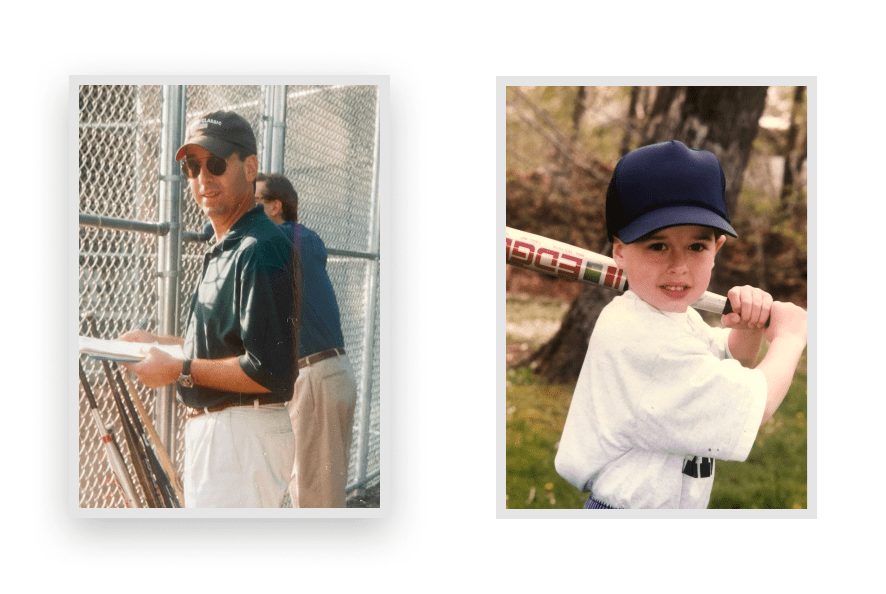
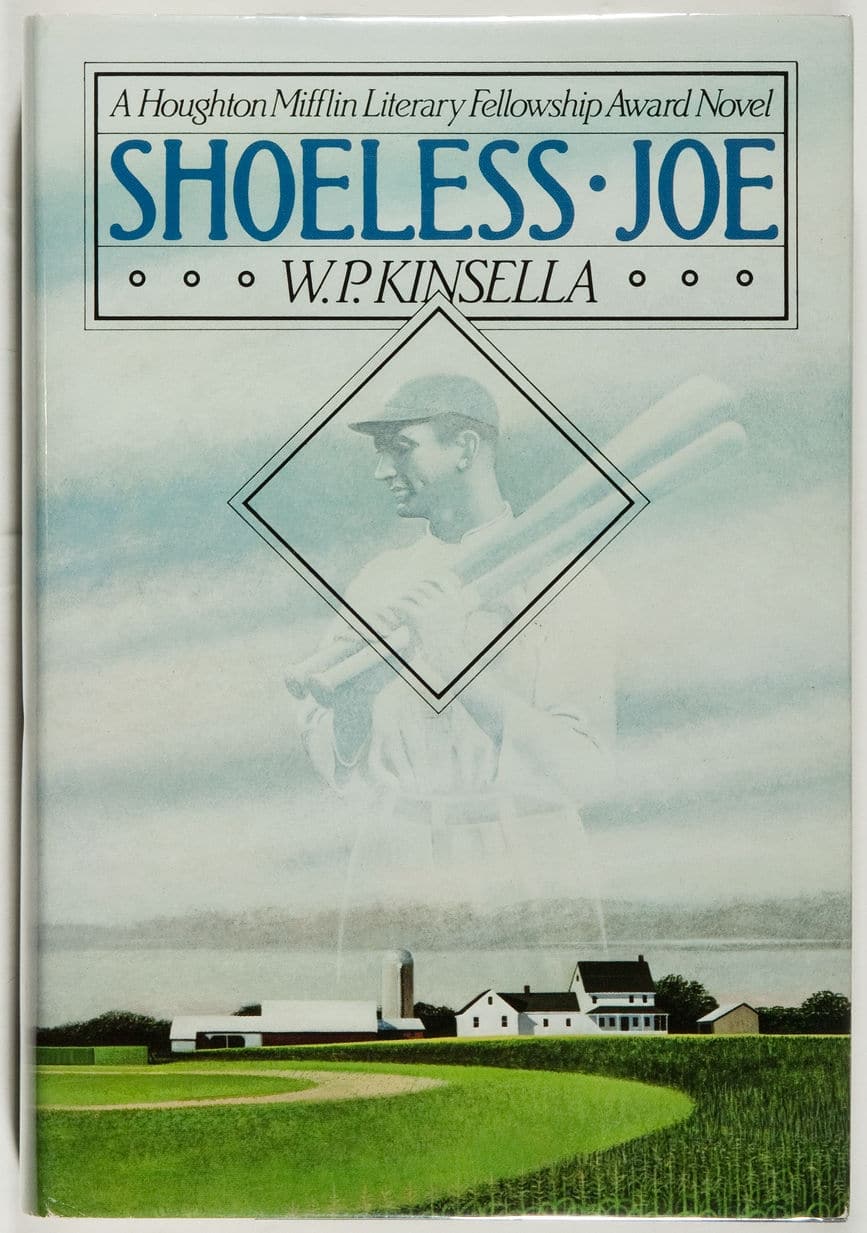
“If You Build It, They Will Come”…
Shoeless Joe is a 1982 novel by W.P. Kinsella. It’s most well known for the 1989 film adaptation, Field of Dreams. The story tells of an Iowa farmer who blindly builds a baseball field in hopes of redeeming his hero, Shoeless Joe Jackson.
The idea of connecting generations through the ‘spectacle’ of baseball and Americana was very interesting to us and still ever-present today. We looked at the social media posts of baseball vs. other sports and an overwhelming amount of baseball photos included a family along with a baseball diamond.
‘Building’ and ‘Customizing’ is something we found appealing to the biggest trouble area for the MLB, Gen-Z. This was the spark for the Stadiumverse. Build it, play it, watch it, and they will come…
Define
Rejuvenate MLB fan growth with a new way for generations to:
- Connect, bond, and continue the tradition of Baseball
Create a form of self-expression for young children of former current MLB Fans
Engage connective tissue between former and current MLB fans
A common trend we found in researching our primary persona, Michael Batsky (middle-aged males) was that the most enthusiastic fans of baseball had a specific connection with the sport. Confirming our discovery work, we found that in 90% of our additional interviews, they either played baseball, bonded over the sport with an older family member, or both.
We decided to permanently attach a secondary persona, Zoey Batsky (children of middle-aged males) to our primary persona. Stressing the importance of finding common ground between the two (below).
In a sport famous for ‘streaks’ we aimed to design something that would continue the generational tradition of baseball.
Design/Protoype
Interactive Prototype 1
The first prototype aimed to introduce the concept of the game and onboard the players. The a interactive prototype is available below
User Flow 1
Testing & Iteration
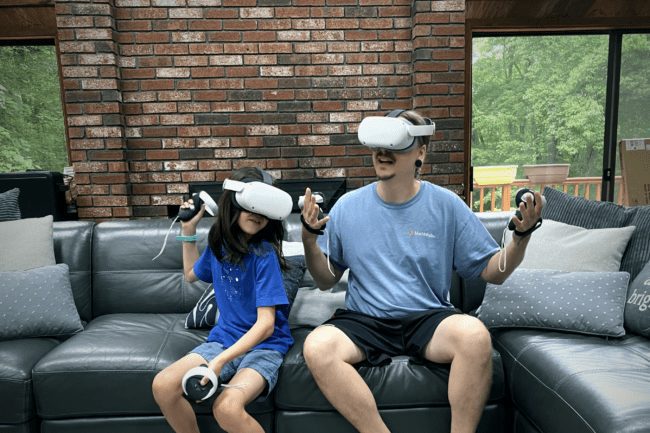
- Overall game concept
- Creating an avatar
- Choosing a track
- Watching a game together
- Customizing your own stadium
- Confusing navigation
- Readability issue
- Hard to find 'Watch Game'
- Enhance overall user experience
100% of testers got disoriented in the onboarding phase at one point when they wanted to navigate either back or forward. You can see the addition of blue navigational arrows in the after images and the home button above. This consolidates the 4 buttons in the before image and is replicated throughout all pages in the updated user onboarding. Additionally it should be noted that on average it took testers 7 minutes 10 seconds to complete onboarding 14 pages of
Interactive Prototype 2
The first prototype aimed to introduce the concept of the game and onboard the players. The a interactive prototype is available below

